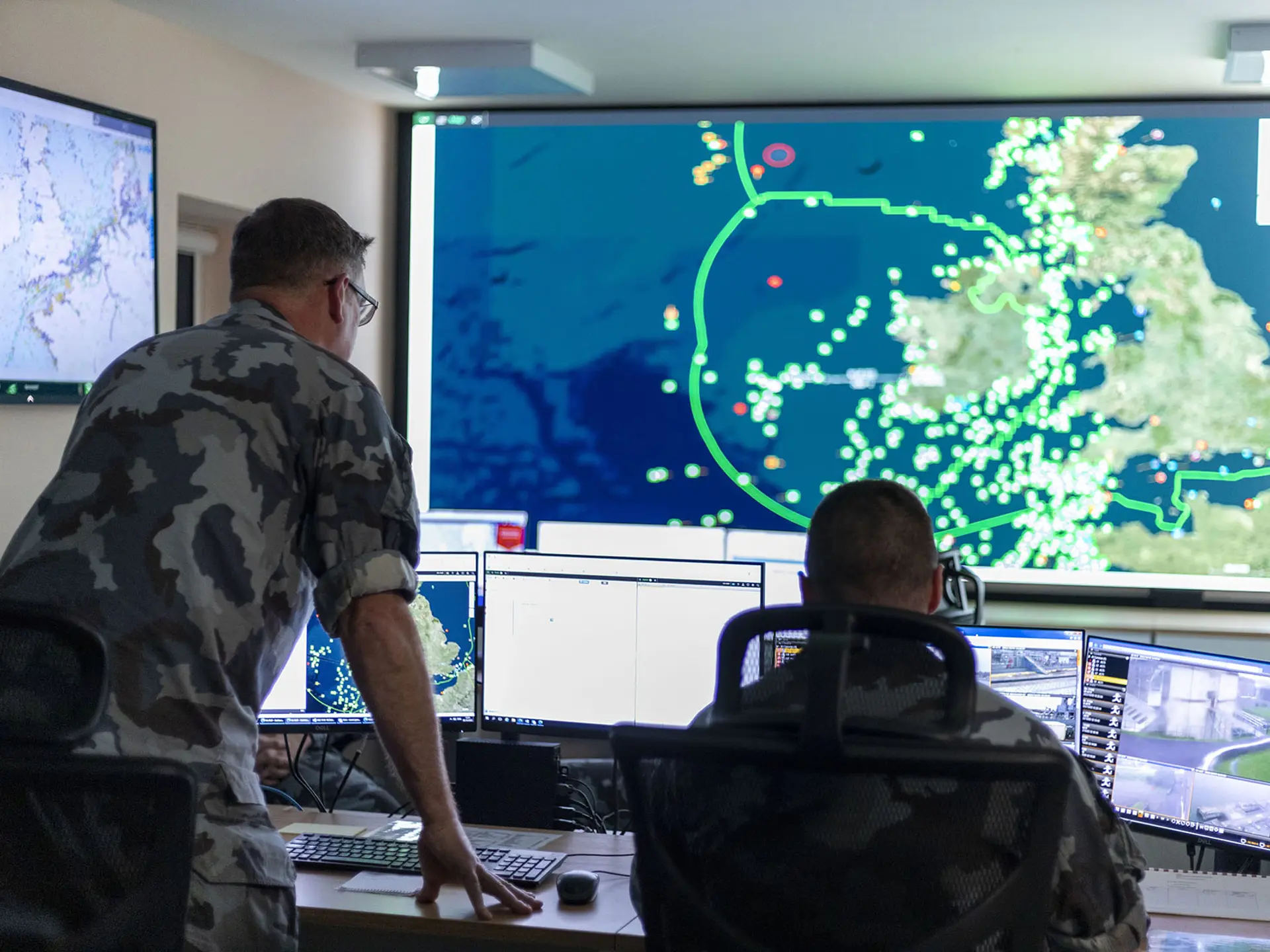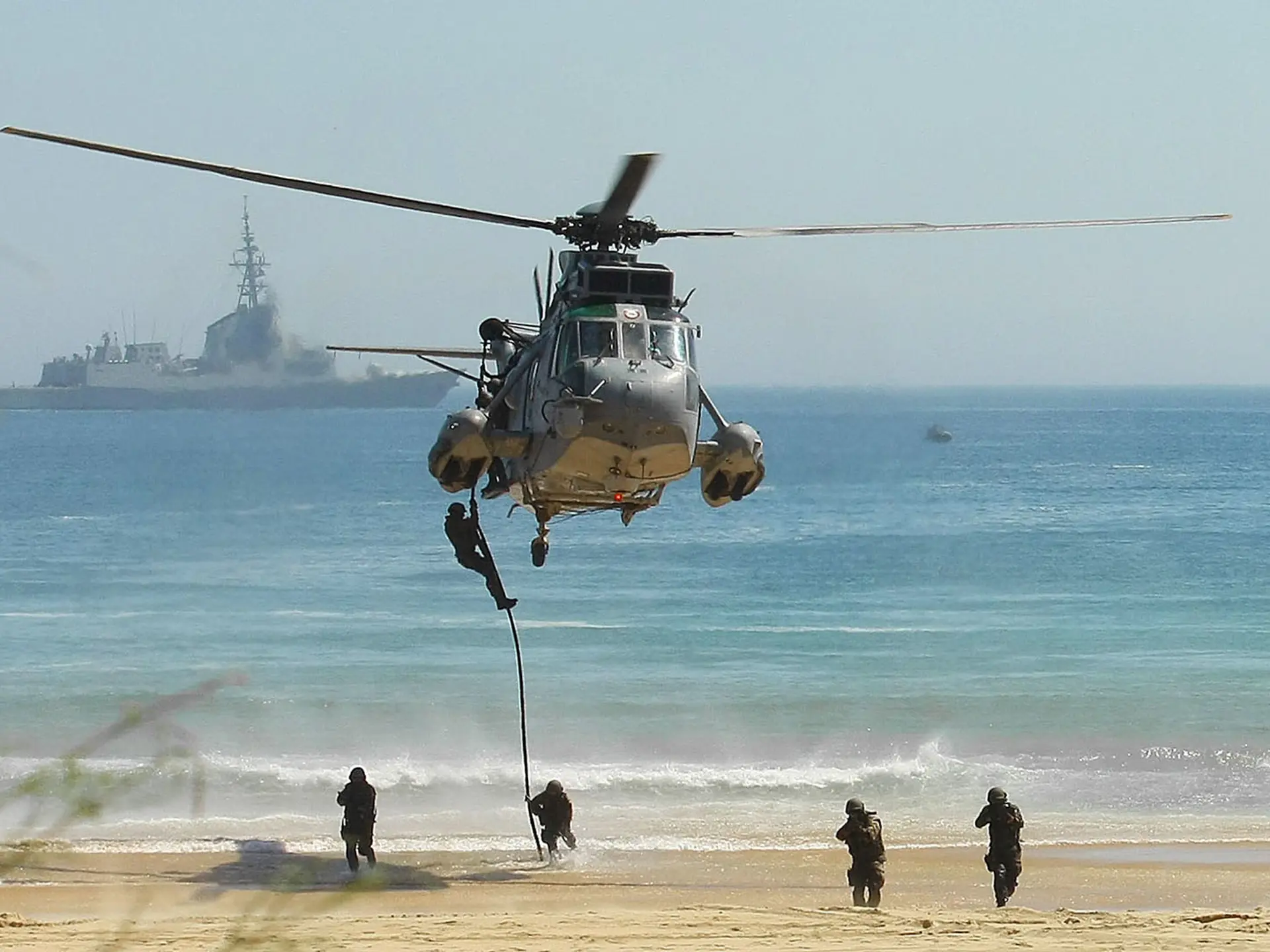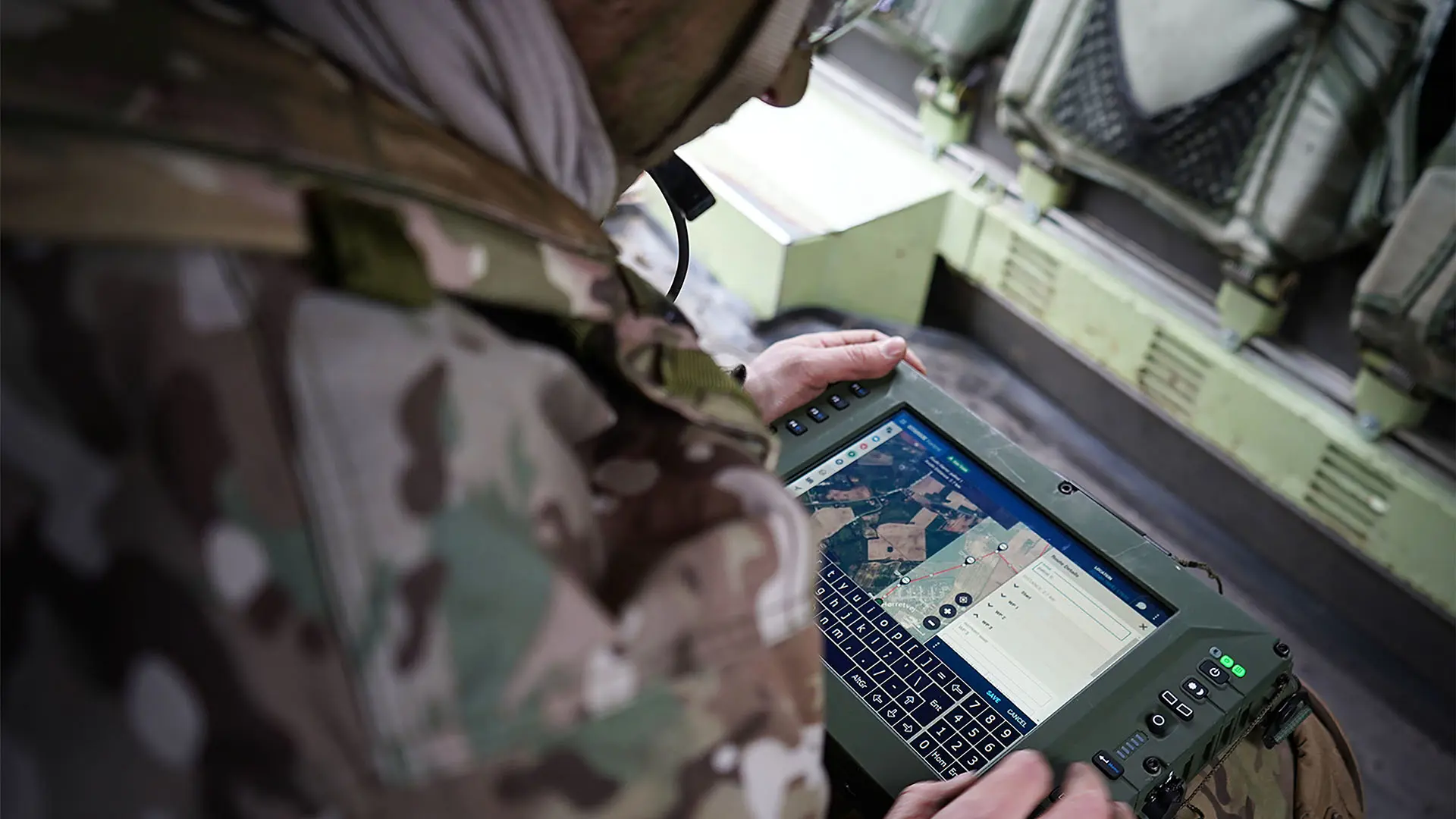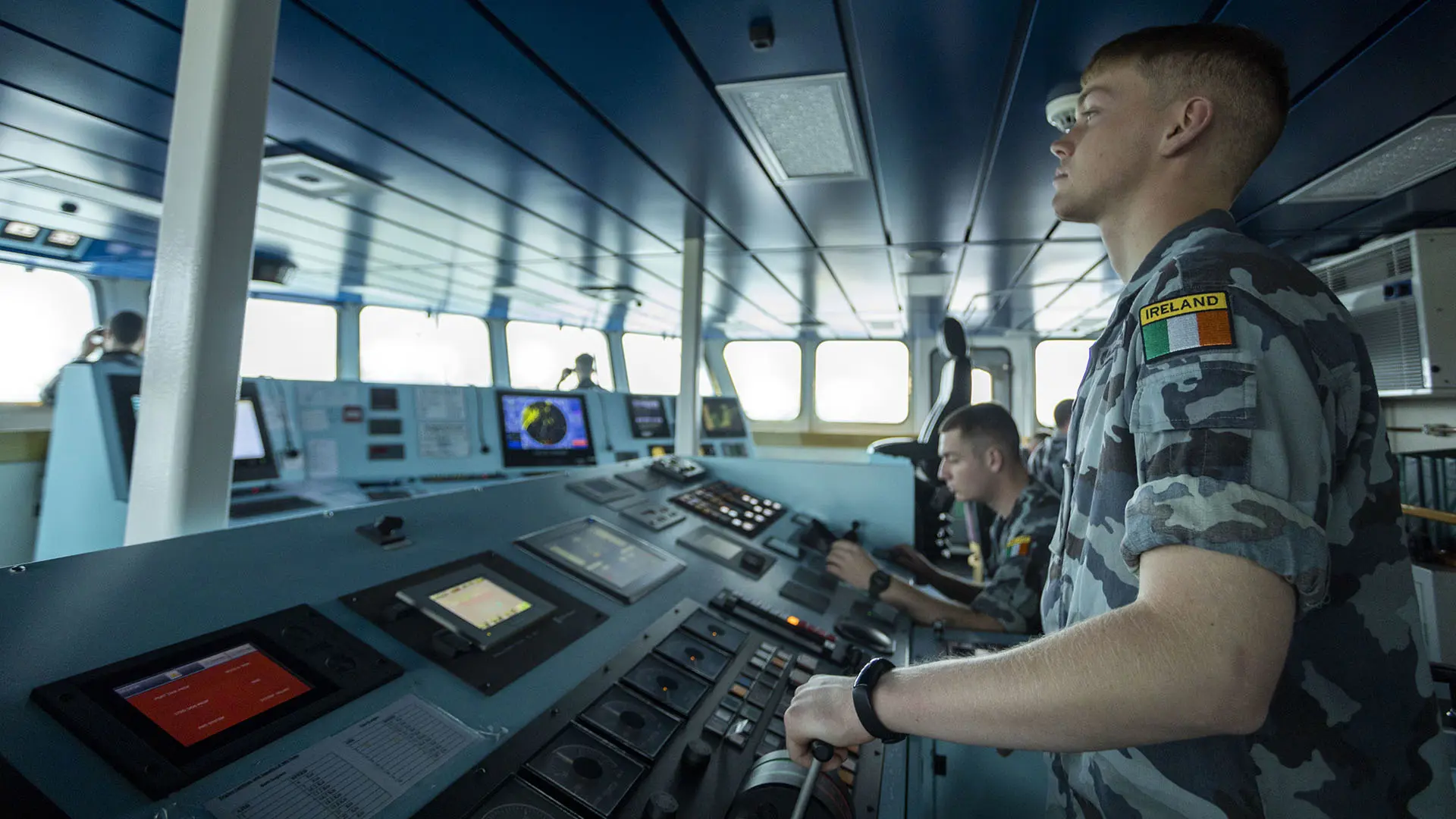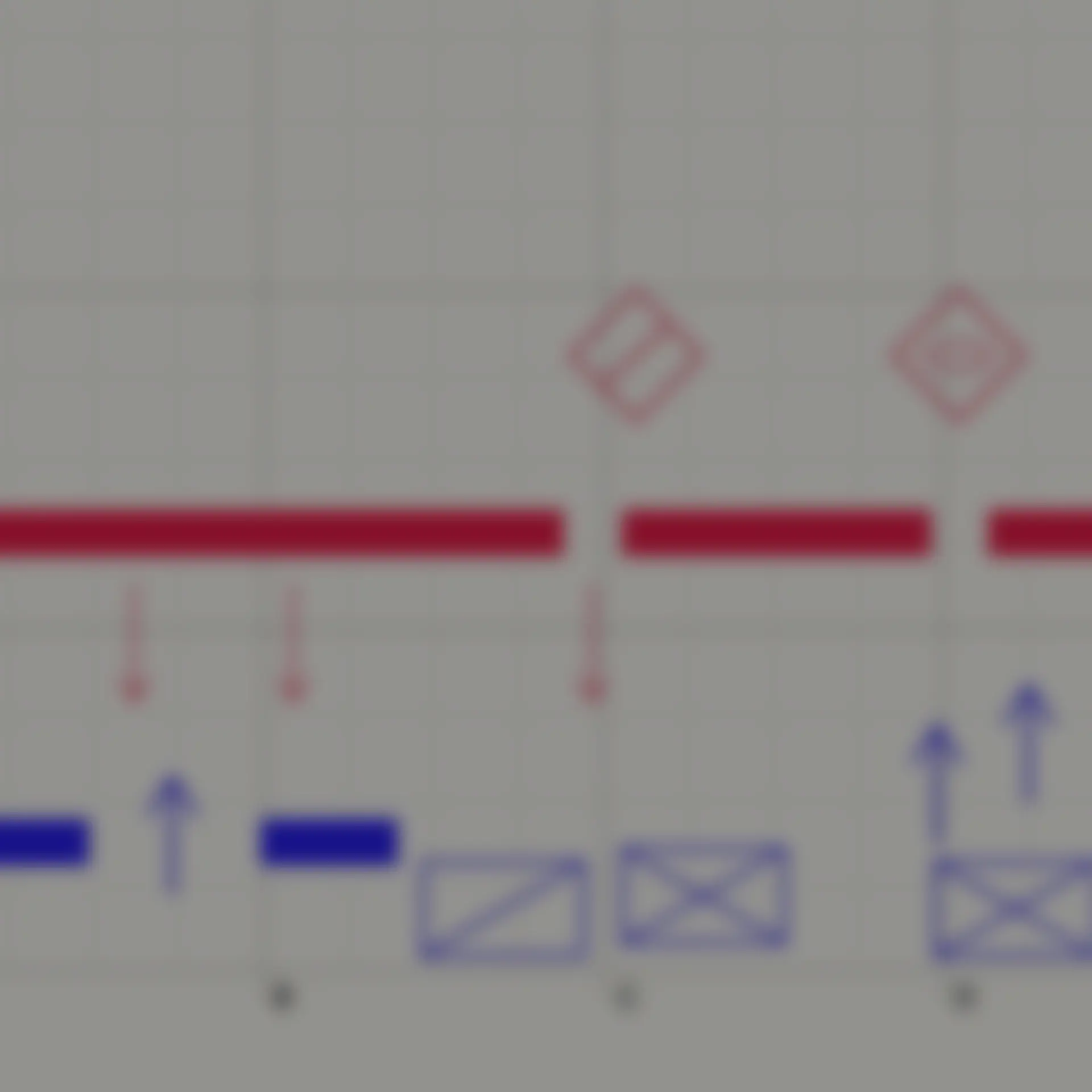
A podcast about military command and control
The 'Command and Control' podcast, hosted by Dr Peter Roberts and sponsored by Systematic, explores how our understanding of C2 needs to flex with modern requirements. It includes high-profile guests from NATO, Netherlands, UK, US, and Australian Armed Forces as well as thinktanks and industry experts to debate hot topics such as AI and multi-domain integration.
Here below, you see an overview of all the available episodes of the 'Command and Control' podcast – and further down on this page, you will find short introductions and direct links to the latest episodes.
The latest 'Command and Control' episodes
In this section, you can read about the latest episodes of the 'Command and Control' podcast. In addition, you will also find the podcast on a number of podcast platforms, including Apple Podcasts, Spotify, and Google Podcasts.
Episode 35: Manoeuvre and the network: C2 at XXX and below
If the role of the corps level is in setting the conditions for divisions to win, how are divisions and subordinate commands going to conduct their own battle (and command it)? What are their roles in the tactical battle? Where does the line get drawn between levels? Is it doctrinally fixed or dynamic?
Modern divisions don’t fight like those in WW2, nor as we planned to during the Cold War, certainly not in the same way as they did in Afghanistan and Iraq. This isn’t about simply faster combined arms warfare: For all the talk about Brigade Combat Teams (BCTs) in the US Army – and those equivalents elsewhere in Western militaries – trying to understand the US Army concept for operations during their “Continuous Transformation” isn’t easy. Step forward Colonel Ethan Diven, Provost of the US Army University and Commandant of the Command and General Staff Course, to explain what this might look like, how commanders and their staff will need to prepare, and what US PME is doing about the new challenges facing the military leaders at the tactical level today, and for tomorrow.
Listen to the episodes
In this section, you can read about and listen to the latest episodes of the 'Command and Control' podcast. In addition, you will also find the podcast on a number of podcast platforms, including Apple Podcasts, Spotify, and Google Podcasts.
If Europeans have been swiftly divesting themselves of real amphibious capability, the reverse has been true of the ADF in recent years. Ray Leggatt, the first true Commander Amphibious Task Force (CATF) of the Australian Amphibious Force, talked through his experience in putting together an amphib capability for a state that had not done this sort of operation in a couple of generations. Ray provides a remarkably honest and frank set of assessments about the capability when he was CATF, the essential trust and relationship needed with the Commander Landing Force (CLF), and the realities of doctrine versus practicality necessary to make a nascent capability tangible.
Most people in the C2 world who would acknowledge the Goldwater Nichols reforms of the US military as one of the big muscle movements in command and control over the last 75 years. It provided the framework for how the US would run wars after 1986 and has had mixed success. But in organising the world of conflict along geographic lines, in prioritising the fights of today over preparing for the conflicts of tomorrow, and in – perhaps – ceding strategy to the military, there is a growing urgency in the need to rethink this structure and some of the organisational principles that US C2 is founded on. Eliot Cohen, doyen of US strategy and history, shares his views on why the reforms of 1986 came about and where the system needs amending.
It is the responsibility of the Corps-level of command to set the conditions for a favourable and unfair fight at the tactical level: so says Major General Mike Keating, Chief of Staff at Headquarters Allied Rapid Reaction Corps. The scale, complexity, and enduring nature of combat on land requires a structure that can enable divisions to fight and prevail, enabling subordinate formations to focus on the immediate and near term with the resources necessary to succeed: recognition of that has seen a renaissance in the Corps-level in NATO, and more widely. HQ ARRC was deployed and employed in Afghanistan during the COIN era, but the skills and functions were different; political, and immediate. Today, the Corps has changed. Mike explains how – and what the future holds for the highest level of tactical command and control.
C2 systems clutter headquarters, some unified on one machine, others scattered across apps and platforms. The market is growing, but the jargon can be confusing. Buzzwords like AI, ML, edge, and cloud are often used without the detail HQ staff and commanders actually need. Modern combat highlights the urgency: Ukraine shows the need to scale system access quickly, a lesson echoed in other conflicts. HADR missions also benefit from C2 systems that can scale fast and work across domains, actors, and security levels. To cut through the noise, I asked the show’s sponsor, Systematic, for clarity. Global VP for BD Andrew Graham and his team of data scientists and military veterans bring both expertise and passion for C2.
Western militaries won’t be able to do C2 in urban warfare scenarios well enough to prevail. So says Professor John Spencer, author, researcher, commentator and veteran of numerous campaigns. Recent lessons from urban fights demand that HQ staffs refocus on things they can control and need to influence (the Info Ops battle, allocation of scarce resources like engineers, as well as critical CIMIC, legal, PAO issues), whilst combat leaders on the ground will need to understand – and exploit – legacy equipment and tools that find utility in complex urban battles; think sound powered telephones, or procedural and paper Fire Support Co-ordination Measures (FSCMs). John’s advice is to train hard, understand the terrain, and what you – and your enemy – is capable of in this unique environment.
Sometimes insubordination within the command chain actually works. Want an example? Take the infamous 1973 Yom Kippur War, when the divisional commander of a reserve formation (Ariel Sharon) circumvented not just his superiors but also the IDF chief in order to get approval for his plan. Gross insubordination….but it worked. History favours Sharon’s own narrative but the command chain had a different perspective. Personalities matter in C2: sometimes the clash of commanders can be detrimental to the campaign. Sometimes insubordination is necessary, but you won’t end up as Prime Minister every time. Nate Jennings explains the context of the fight, the decisions, and the background to the big decisions.
Peace keeping missions (whether peace enforcement, peace building, peace making, or conflict prevention) are very different to the formatted hierarchy and organisation of set-piece, large-scale military missions which Western allies have been accustomed to over the past decade. Even the experiences of ISAF or Iraq are outliers rather than a standardised format replicable across peace keeping tasks. This is also evident in the C2 of these missions: often more complex, ambiguous, woolly, and confusing than most military officers will be accustomed to. And that’s without bringing in a strategic HQ structure that has fewer staff and less experience than Western counterparts. Ewan Lawson, associate fellow at RUSI, talks through what characterises PK missions: his one-word answer? Fragmentation.
The key principles of logistics might not have changed, but we have been lulled into false sense of adequacy about logistics and war. Steve Leonard and Jon Klug delve into how protracted wars make command conversations about logistics and supply different. The honest advice from the G4 might not always be appreciated but husbanding resources for a long-war is something commanders need to hear, and probably don’t get from elsewhere. War-gaming might help but when these exercises are limited by time and training outcomes, the realities and tensions of logistics are less about the last mile and more about an ability to adapt, innovate and invent.
The announcement in February 2025 of a restructure of Ukrainian command and control went largely unnoticed in the West. It shouldn’t have: the implications are significant. Mick Ryan provides some much-needed illumination and insight into what this means, why it came about, some of the challenges and opportunities that may result, and whether lessons are immediately transferrable. Training and selecting commanders is a critical enabler to making this all work, and Mick recalls some of the syllabus from his time at the USMC School of Advanced Warfighting to give us a flavour of how different the Corps level is from Brigade operations. Mick finishes with a short update on IDF C2 as a comparator.
As well as Mick’s 3 books currently available, he also has a chapter in Steve Leonard and Jon Klug’s new book, “Professionals Talk Logistics”, available from Howgate Publishing. You can also sign up for Mick’s substack so you don’t have to miss out on his weekly Big 5.
Everyone understands that civil agencies and institutions do not operate in the same way as military organisations. The culture, aims, objectives and funding models are different, as is the way they run activity. Sowhen militaries and these agencies interact, a sense of fiction and misunderstanding often emerges. A small group of military staff stand between the behemoths of civil and military leaders - the CIMIC staff; it is their understanding of both sets of cultures that smooths activity in the 97% of military activity that is not combat operations. Kathleen Porath, academic advisor at the NATO CIMIC COE, talks about areas for improvement, the impact of technology, and the investments needed to improve relationships for the future.
Nuclear Command and Control (NC2), and Communications (NC3) is a world apart from C2 for conventional forces: it underpins strategic stability between nuclear armed states. With the emergence of a ‘3-body problem’ in Great Power Competition, there is a risk that Western leaders (political and military) simply try and transpose Cold War theories onto the problems of today, and add some AI/ML to make it look pretty.
Professor Andrew Reddie from the Berkeley Goldman School at the University of California, explains why this would be foolhardy in a remarkably accessible way. That’s not easy given the emotion, biases, and vitriol that surround any discussion on NC2/NC3.
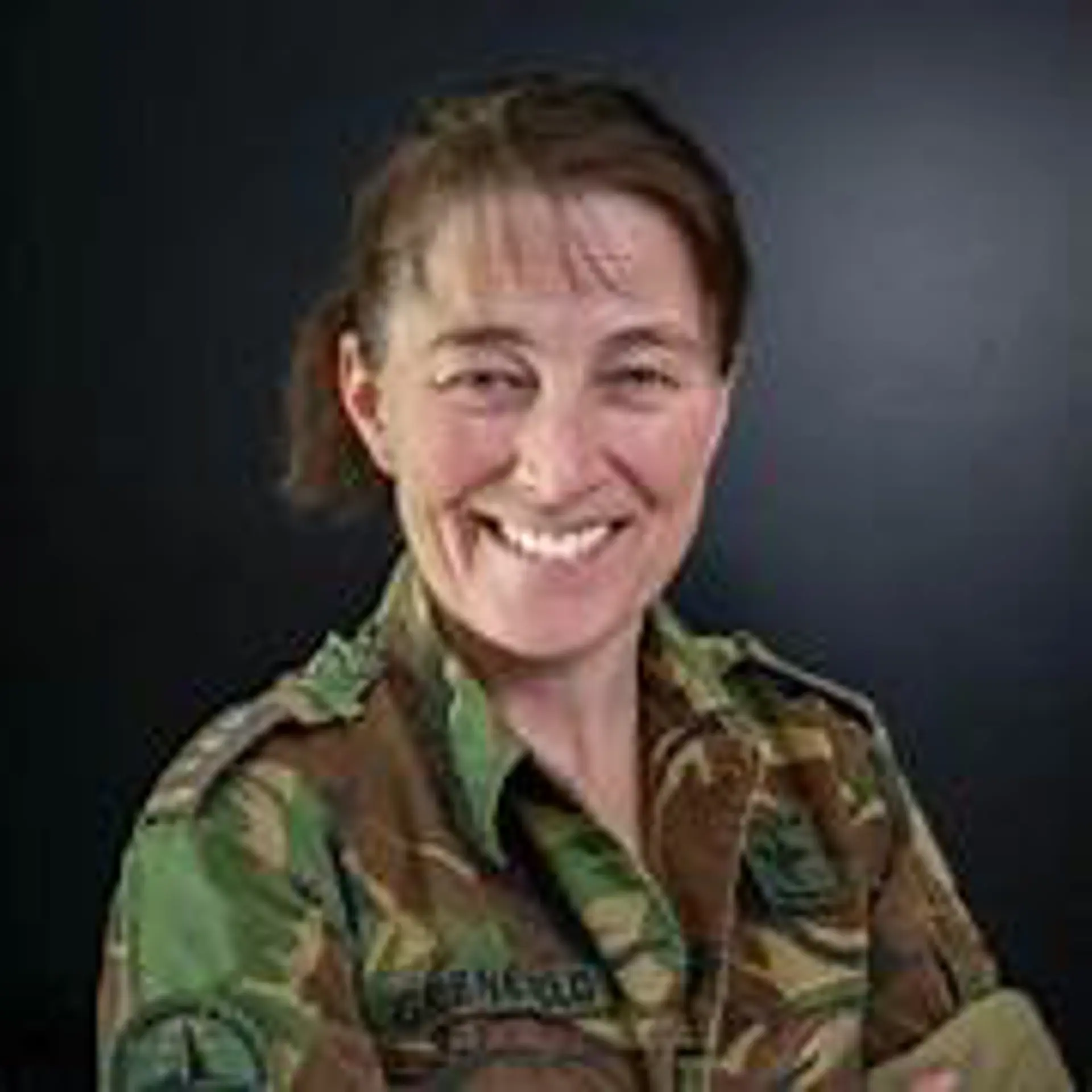
Fast reflections of the annual NATO C2 Centre of Excellence (C2COE) conference in the Hague with the centre’s commanding officer, Meitta Groeneveld. The challenging issues of Multi Domain Operations and Synchronisation, and the implications of that doctrine on command and control, were the conference’s planned themes.
Peter and Mietta also had a conversation about the Cross Domain Command Concept, data and the human, the need to share, the lessons from Ukraine on C2 about adaptation of C2, the community of interest (the “we”), the political (and societal) will to change, the journey towards and beyond C2 in MDO, and the Babylonian Confusion over doctrinal terms. A lot to cover in just 45 minutes!
The military sometimes promote and appoint leaders who are truly terrible. Sometimes this isn’t their fault, they are not always narcissistic or toxic: sometimes they are just not up to the job. But the issue for staff is how to handle poor leaders. Professor William Scott Jackson from Oxford University is perhaps the foremost researcher in this field, and he brings with him a wealth of experience and lessons from the private and commercial world – much of it translates into the military world without much imagination.
In this episode he talks about succession management, micro solutions for bad leaders, decision-making, the importance of thinking time, differentiated capability theory, and Blue Ocean Strategy. You decide how much of this translates to the Profession of Arms.
If there is some unresolved tension in the ideas of mission command and synchronisation – particularly within the MDO concept – then it could be more useful to think about the USMC idea of Coupling; of providing linkage between warfare activities that are needed to execute a task and/or mission.
Instead of simply connecting everything because it’s possible, the Corps advocates for an approach that provides the means on a case-by-case basis. Interestingly, it is explained best in MCDP5 (USMC Planning) penned back in 1997, and signed off by the legend who is General Charles C. Krulac.
Talking about C2 (reality and theory) is best done with a marine and Peter was joined for this discussion by Sean Welch, a marine with the intellectual and operational credentials to offer some really important perspectives.
Imagine sitting on a battlefield and trying to figure out what is happening with only your ears to guide you; your guidance is based on orders written weeks or months ago, and the last time you got an update of where your own forces where was a day old (at best). That, in essence, is submarine warfare. There is no constant information flow for situational awareness and communication (of any kind) endangers your existence; so submarine commanders are required to make decisions based on a series of assumptions about a myriad of variables and use their experience, judgement, advice from their team, and a deep understanding of their adversary.
Building people who can do this – so different to most other warfare experiences – requires a special process: The Perisher. Peter talks to Phil Titterton about command and control of submarines, his experiences in the Royal Navy’s submarine service, and about waterspace management (submarine control measures). Now you can open your eyes.
Former NATO Sec Gen Jaap de Hoop Scheffer talks about what it takes to make effective command relationships work at the highest level of Pol/Mil C2: the tensions between domestic agendas and international obligations, decision-making in NATO, and how to achieve coherence and agreement in matters of war. The conclusion, perhaps unsurprisingly, is that the level of co-operation between politicians and their military counterparts is not something that can be scripted or forced: it depends more on personalities, behaviours, and shared interests than on orders and formal hierarchies. Reflecting on successes and failures, Jaap makes for compelling listening.
In providing commanders with the ability to command and control, computerised systems have been in use for more than 50 years. Their evolution from siloed systems inside individual units, moving across task forces, then to covering theatres has helped operators and HQ staffs orchestrate military means with increasing efficiency and lethality. The change in the last decade – according to Andrew Graham – has been in moving from enabling these domain-to-domain C2 structures to talk to each other, to one that has to integrate the data from each platform system to be seem by everyone else. Now that idea - based on an assumption of ubiquitous and constant connectivity - has evolved again. How can you operate a C2 system when to transmit data might spell certain death?
The captain of a warship has, sometimes, godlike omnipotence. Does this mean that naval command and control has some unique characteristics that need to be better understood in order to be integrated into the ‘modern’ rubric? Vice Admiral Martin Connell, Second Sea Lord in the British Royal Navy, talks to Peter about what’s unique about naval C2, and whether the education and development of leaders in the Royal Navy is good enough.
What makes a good and a great military leader? The myth of a divine, born leader is very popular but today we actually know better than this fiction. Science has given us the evidence to understand what traits and characteristics imbue a person with the skills and experience become a great leader. And we actually know how to select them based on the very different requirements in wartime and peacetime. It is also popular to talk about leadership and followership as two distinct functions; the term servant leader has become fashionable amongst military professionals as an attempt to delineate the boundaries between these two groups, yet still keep the hierarchy. Expert analysis is harder to find; for that we need to turn to science and a human psychologist. Sarah Chapman-Trim talks about making the least-worst decision (as opposed to the best one), the fallacy of the divine general, how we can train better leaders, and the dual-agency model of leadership. Sarah’s research paper (perhaps better understood with the title ‘Social identity as Alchemy’) is at https://www.army.mod.uk/media/24170/leadership-insight-no45-social-identity-as-a-leadership-tool.pdf
Many medium powers have been struggling to keep pace with the US military as it reimagines how it will undertake command and control over the coming decade. For those in Canada the challenge is extremely pertinent: shared coastlines, integrated C2 at NORAD, conjoined airspace and territorial seas, a long and unfenced land border, and the block between the US homeland and Russian forces in the Arctic. Canada also faces pressing concerns in trying to balance resources between the challenges being faced to their West as well as to their East and North. Deputy Commander of the Canadian Joint Operations Command, Major General Darcy Molstad talks to Peter about the various challenges, tensions and frictions, and how Canada has been adapting. Underneath all of the strategic discussion lies an enduring truth about what commanders face in the future, and what will be required of them: delegation to the point of discomfort.
A discussion with Major General Karl Engelbrekston, former chief of the Swedish Army who retired in Jun 2023. Command and control is clearly different when operating in environmental and geographic extremes; the High North (well inside the Arctic Circle) exemplifies those conditions. How to command and how to exercise control over military forces in those extremes leads to an interesting conversation about the realities of delegation and empowerment. Given Karl's experiences with multi-national forces too, there are some interesting take aways from this discussion that get to heart of modern C2. Most usefully, this conversation allows us to hold a mirror to some of the rhetoric about contemporary and future C2 made in other military circles. Sobering stuff.
Having an intelligent conversation about command and control requires a discussion with the USMC, the same institution that gave us the current C2 taxonomy back in the 1980s. While USMC force design 2030 leans towards a decentralised command structure and an aggregated control hierarchy, the pragmatism of the Corps has nested capabilities at lower levels that would allow a much more flexible approach to C2. In contrast to other forces which retain very structured C2 architectures, the USMC seems to be comfortable with a degree of ambiguity that would make others tremble. Peter talks to Colonel Lester (Ray) Gerber from USMC Pacific Forces Command about the philosophy of C2 in the Corps, about the nature of control now and in the future, and about the centrality of the human component. Much of the latter part of the discussion is focused on partners and allies: should we be ready for less command and more co-operation in a revised C2 dynamic fit for the fight tonight? Much to ponder on here.
Command and control in the air domain has always been very different to that of other domains. Much more control, command execute in differnt ways, at different levels, and all captured in the phrase "Best picture has....". How much has been forgotten from former expereinces of air C2 in major contests and competiton? How much are we willing to relearn? How much of the differences in domain specific C2 will be lost as we amalgamate and integrate structures towards a beautifully informed single commander or system, a la Enders Game? Peter talks to former senior RAF officer, Paul Kendall about our understanding of air power in the Western, Supremacy and Superiority, and a contested electronic environment without the freedoms that have been hallmarks of Western military operations since the 1990s.
Having spent the week at the NATO C2 Centre of Excellence in The Hague, talking C2 with some impressive people, this episode captures a ‘hot wash’ between Peter and Colonel Mietta Groeneveld, Director and Commander of the C2COE. Given this was recorded only 90mins after a fairly intense 3 days, we don’t cover all the take aways, but it gives a flavour about some of the themes we talked about and some of Mietta's thoughts too.
In 2019, the Chiefs of Staff of the US military determined that C2 really had to adapt. The decision came after the publication of a report on Russian C2 and counter C2 capabilities: on that basis, the programme on Joint All Domain C2 was initiated. Currently, the US is spending between $1-2BN per year on it, having scoped it and pushed it forward with remarkable speed. It is progressing rapidly through the experimentation phase but has shifted shape over 5 years – moving from a plan to enable the Joint Force Commander with a long screwdriver to something that enables a more dynamic and rapid kill chain. As Rafael Lopez tells us, it may still suffer from “Principle Agent Problems”, but the future looks pretty bright.
In this final episode of series one, Vice Admiral Andy Burns, Major General Zac Stenning and Andrew Graham answered questions from the audience on command and control live at the DSEi event in London. The panel couldn’t get through all the challenges thrown their way so we focused on the big themes: What will C2 look like in the future? How will ML and AI impact decision-making? Will C2 survive in its current form? What does the role of the commander look like in the future? And do we train and educate our future commanders well enough? Lots to digest before we start recording series two…
People lie at the heart of any C2 complex – both those in command and their HQ staff, as well as those at the gritty end of an orders process. Beyond the dry doctrinal definitions of command and control sit the facets of mental capacity, resilience, adaptability, leadership, standards, behaviours, and trust. This isn’t a one-size-fits-all approach either because the shock of combat and the context (and battlefield geometry of the fight) differ between battles, let alone campaigns or wars. One combat experience might feel similar to previous experiences, another utterly alien. Peter talks to Major General Zac Stenning, Commandant Royal Military Academy Sandhurst and Director of Army Leadership, about what these mean, about mission command, the future of C2, the joint and combined fight, and the need for a dynamic C2 structure, as well as the role of industry. Underpinning all of this is a desire - perhaps even a need - to seek and exploit human creativity and initiative in combat. Heady stuff.
Everyone seems to be talking about how Artificial Intelligence inside HQs will revolutionise command and control. The issue is that we don't even seem to have an agreed definition of AI, and the pol and mil leaders providing this rhetoric don't seem to have an answer to that either (or really understand what it is). Sitting down with two AI specialists, people who work with AI engineers on a daily basis, was enlightening in terms of definitions, clarity and perspective. The reality - from people who make this happen - is that AI (as described by many people) is some way away from widespread utility on military operations: the policy drivers are absent, the confusion with autonomy is widespread, the military purpose is ill defined, and there is a missing pragmatism from the reality of technical development (not least in the inability to provide AI systems with clean databases to learn from). This view from the coalface of C2/AI development is genuinely enlightening.
Trust has always been a central concept in military command and control: it can be based on a ‘Band of Brothers’ construct or something a bit more complex with allies and partners. Yet this human-to-human rubric is not the same when we consider the concept of trust as it applies to human-machine trust. Or is it? Peter talks to Christina Balis, who wrote a paper in June 2022 about human-machine trust, about how we should be thinking about this – something that has been missing from the discussions as more C2 systems are added into military forces. What emerges is a demand for less coders (or software savvy commanders), and more about diverse education sets and inquisitive minds. Especially if the philosophies of delegated and mission-command are to remain more than rhetoric.
In ‘How to Win’ rather than ‘How to Operate’ in a peer or near peer war, time is vital and the ability to share commands (orders) faster than an adversary becomes a critical function of campaigning. The ability to plan and create those orders rapidly enables a different operating tempo to be achieved, ensuring dissemination works to outpace opponents. Peter talks to Lt Gen (rtd) Ben Hodges, US Army, about the differences between historical C2, the contemporary fight, and the future of C2. A new orders process able to be worked and distributed across coalitions and alliances seems to be a fundamental part of success: underpinned by complex exercises, skilled use of common language, and a shared understanding of what needs to be done. In essence, we need to focus more on a ‘common tactical mindset’ than a ‘common operating picture’.
It is not hard to identify the great (and successful) commanders across history – and it turns out they have a few things in common. But what has changed with the advent of control measures into the C2 rubric? Peter talks to Professor Michael Clarke about how compression and expansion have shaped the modern military C2 machine, about the skills needed from a commander today, and how the political military relationship is changing – given the ability to orchestrate campaigns from afar. The conversation ends by touching on the added complexity of coalition partners and allies in C2 structures: There is no doubt that this requires a successful commander to have an even wider playlist than was the norm across history. Whether we talent spot and train these individuals well enough is a more dubious proposition.
Command and control in war is very different to peacetime plans: and then C2 that works well for defensive operations will not necessarily be optimised for offense. The Western experiences of Afghanistan and Iraq threw up a host of lessons which HQs have been implementing: yet the observations of C2 in Ukraine provide a different lens for the problem. Peer and near-peer conflict requires a different C2 strategy, one that is determined by those who are able to exploit control tools available now – not those promised at some date in the future. From multiple visits to the Ukrainian military over the past 15 months – and built on experience of numerous other conflict zone - Dr Jack Watling, Senior Research Fellow for Land Warfare at RUSI in London, has a unique view on what it takes to deliver control on a modern battlefield: Whilst command seems to be more culturally specific than we think, control measures need a good deal more flexibility and imagination than we, perhaps, train for.
Martin van Creveld talked about command being about the ‘Quest for Certainty’, in order to make the right decisions. But there is, according to Mick Ryan, also a fallacy in certainty. It is a myth that certainty on a battlefield can ever be achieved – whether the delivery of a real time common operating picture, or exact knowledge of enemy disposition and intent. How do we train and prepare commanders for a battlespace that has no certainly, but also where time is compressed for decisions, where delegation is forced down to new levels, and a command footprint is – in and of itself – a high value target for the enemy? The conversation starts with the context and culture of command in the US, UK and Australia, but also touches on Russia, China and Iran. It moves on to talk about developing people (political leaders as well as military ones), and then addresses the future C2 environment and ideas about preparing leaders, commanders and the role of industry in delivering effective C2 systems for the future. A rip roaring opener for this new podcast series.
The show is about military command and control - sometimes considered the panacea of battles and campaigns - and what it might look like for the fight tonight and the fight tomorrow, whether for irregular warfare or for high end warfighting.
The hypothesis is that command is human and control has become increasingly technical/technological. In that, much has been written about command but little enough about control. Blending human decision-making with cutting edge technology in military headquarters has been an evolutionary process over the past 20 years, but the advent of data science, big data, machine learning and AI have given rise to a sereis of promises about machine control at the speed of data exchange: it sounds like an end to human command. How much truth sits within these statements by political masters and AI evangelists? Can AI substitute for the creativity, wit and guile of human commanders? How will dynamic control measures shape military command in the future?
Join us as we talk through C2 for an era of high-end war fighting at a moment when the increasing availability of dynamic control measures is centralising control away from local command. It has been a noticeable trend in Western C2 since the late 1980s. Given the growth of C2 systems in HQs, I think we need to consider how we effectively synchronise between the key functions of command and control. We aim is to open the conversation up – since we haven’t had a serious debate about what the ‘control’ element of C2 since the 1980s.
About the Command and Control podcast
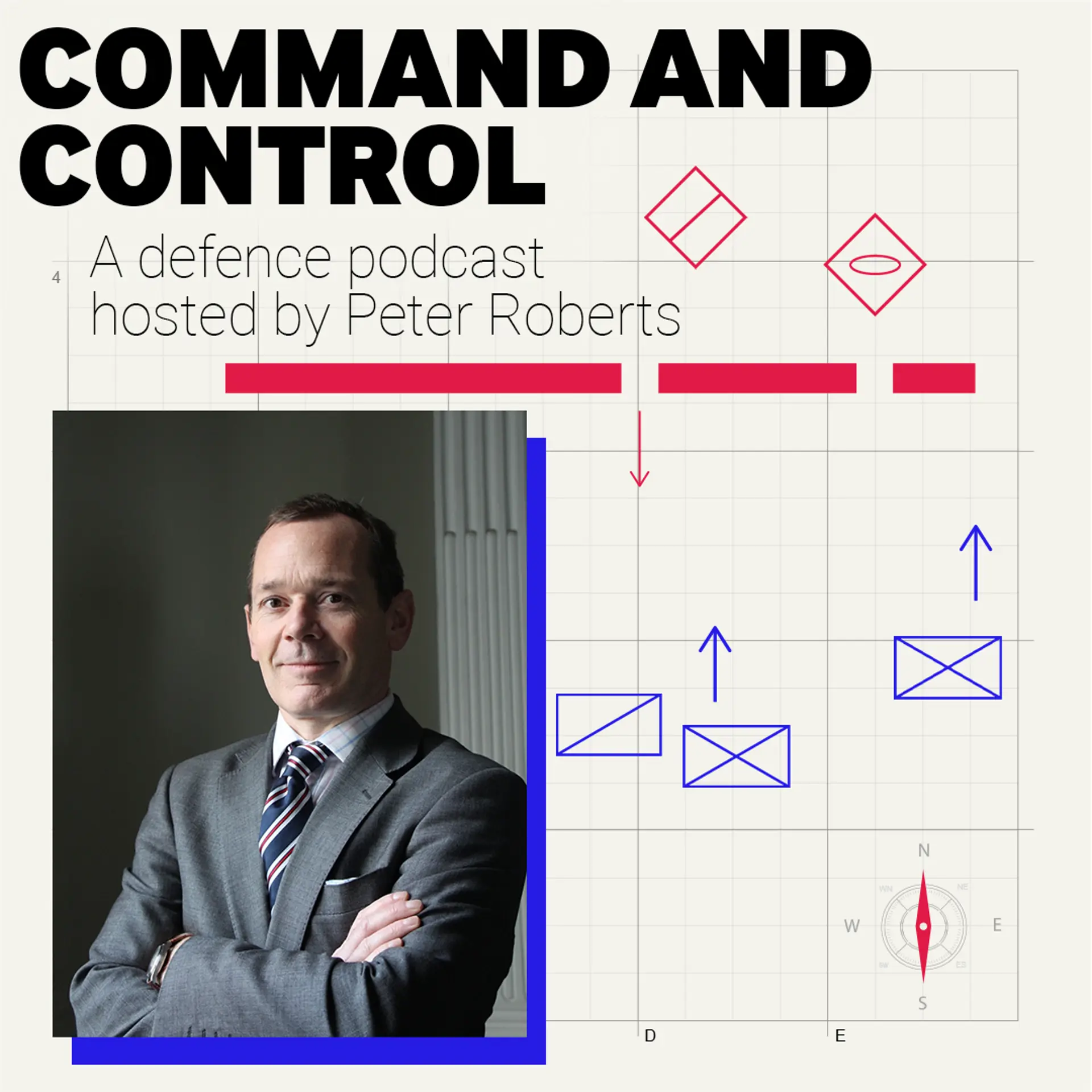
The 'Command and Control' podcast aims to open up the conversation about command and control – or C2 – which is often over looked in the race to acquire more technology, arms and personnel, but is a necessity when it comes to battlefield strategy.
The present era of a return to peer warfare and high-end warfighting amid a technological boom has resulted in a blend of human decision-making and cutting-edge technology. But how does this really look? Can AI really substitute for human factors? And how will dynamic control shape military command in the future. Check out the 'Command and Control' podcast to find out!
About the podcast host, Dr Peter Roberts
Dr Peter Roberts is the host of the 'Command and Control' podcast. He is both a Royal Navy veteran and the former Director of Military Sciences at the Royal United Services Institute.
In addition, he is a regular global commentator on military affairs and the host of a popular defence podcast called Western Way of War.
Where to find the Command and Control-podcast
You can find and listen to the 'Command and Control' podcast right here on this landing page – and on a number of podcast platforms, including: Amazon Music/Audible, Apple Podcasts, Audacy, Boomplay, CastBox, Deezer, Google Podcasts, iHeartRadio, JioSaavn, Libsyn, Player FM, Spotify, Stitcher.
Interested in command and control?
Check out the ebook, case story, or blog post here to get even more perspectives on modern command and control.

